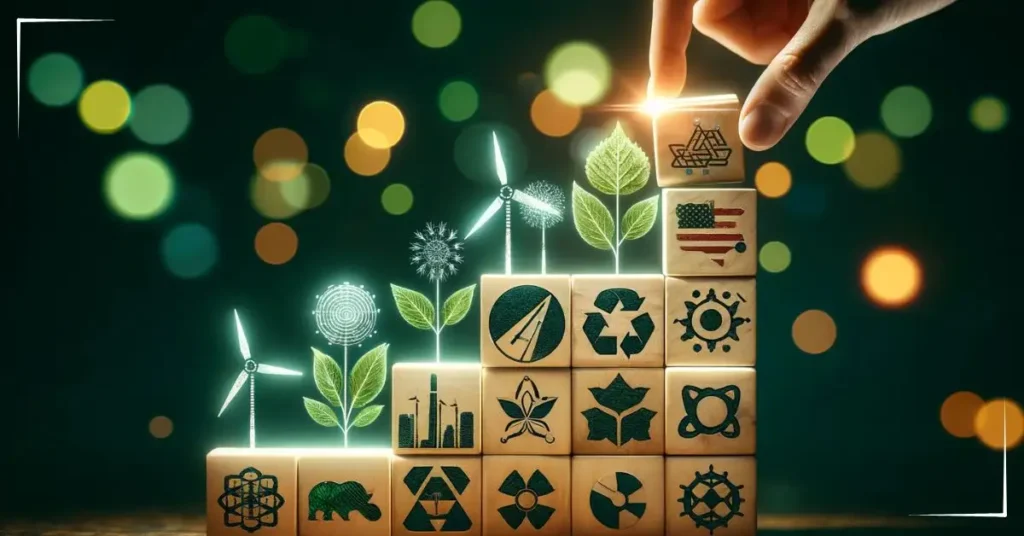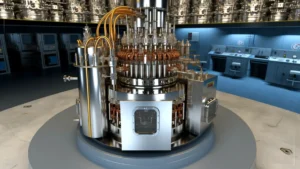Coalition Carbon Capture Technology — In the vanguard of the global effort to combat climate change, the dawn of a new chapter unfolds with the launch of the Envirotech Accelerator and the establishment of the Coalition for American Leadership in Carbon Dioxide Removal Technology. At a time when the planet’s future hangs in the balance, the convergence of technological prowess and visionary leadership heralds a transformative era in the pursuit of environmental sustainability. This coalition strategy outlines a comprehensive roadmap, charting the course towards a future where carbon dioxide removal (CDR ) technologies emerge as pivotal solutions in the quest to mitigate the impacts of climate change.

With an understanding of the current landscape of carbon capture and removal technologies, legislative frameworks, and a firsthand knowledge of the multifaceted challenges these innovations face, this post delineates a strategic approach to surmounting obstacles and capitalizing on opportunities. Through the lens of policy initiatives, technological advancements, and collaborative efforts, it presents a forward-thinking perspective on how the United States can lead by example, driving not just national but global progress in the adoption and enhancement of CDR technologies.
As we stand at the precipice of potential environmental calamity, the actions and strategies detailed herein offer not merely hope but a practical blueprint for change. This introduction serves as a clarion call to policymakers, industry leaders, researchers, and communities to unite in a common purpose. Together, through the initiatives of the Envirotech Accelerator and the coalition’s efforts, we embark on a journey towards redefining American leadership in the environmental arena, setting the stage for a legacy of innovation, sustainability, and global stewardship in the fight against climate change.
The Current Landscape of Carbon Capture Technologies
The battle against climate change is increasingly relying on technological innovation, with carbon dioxide removal (CDR ) technologies at the forefront. In all scenarios proposed by the United Nations’ International Panel on Climate Change, CDR technologies are mandatory in order to avoid crossing over critical global warming tipping points. These technologies, varying from biochemical to physical capture methods, offer a beacon of hope but also present a complex matrix of challenges and opportunities. Current CDR technologies, such as direct air capture (DAC), bioenergy with carbon capture and storage (BECCS), and enhanced weathering, demonstrate promising capabilities in removing CO2 from the atmosphere.
However, their scalability and efficiency remain key limitations. The need for significant advancements in these technologies is clear, as is the requirement for substantial investment in research and infrastructure to overcome existing barriers.
Legislative Background and Policy Initiatives
The legislative landscape for CDR in the United States has seen meaningful progress with the introduction and enactment of several key policies. The Inflation Reduction Act of 2022 included several provisions providing tax incentives for lowering emissions and promoting technologies which lower emissions and remove carbon dioxide from ambient air. The Utilizing Significant Emissions with Innovative Technologies (USE IT) Act represents a foundational step, promoting research and streamlining permitting processes for CDR projects. Similarly, the Carbon Capture, Utilization, and Storage Tax Credit Amendments Act of 2021 provides critical financial incentives, encouraging private investment in carbon capture projects.
Furthermore, the recent Carbon Dioxide Removal Research and Development Act of 2023 signifies a deepened commitment to advancing CDR technologies, allocating funds specifically for innovation and deployment. These legislative actions collectively aim to create a conducive environment for CDR technologies to flourish, addressing both technological and economic barriers.
Challenges in Carbon Capture and Removal Technologies
Despite the optimism surrounding CDR technologies, significant challenges impede their widespread adoption and effectiveness. Technological limitations, particularly in terms of efficiency and scalability, remain a critical hurdle. The energy-intensive nature of current CDR methods, along with the need for substantial infrastructural development for storage and utilization, presents logistical and environmental concerns.
Additionally, public perception and community engagement are vital to the successful implementation of CDR projects, with concerns ranging from environmental impact to land use. Addressing these challenges requires a concerted effort from all stakeholders, emphasizing the need for continued innovation and dialogue.
Strategic Policy Solutions and Innovations
To surmount the challenges facing carbon capture and removal technologies, strategic policy solutions are paramount. Enhancing research and development (R&D) funding is essential to drive innovation and overcome technological barriers. This involves not only increasing federal and state funding but also encouraging private sector investment through incentives and tax credits. Implementing technology-neutral standards can ensure a level playing field for all forms of CDR technologies, fostering diversity and innovation in the sector.
Moreover, standardized life cycle assessment guidelines are critical for accurately measuring the environmental impact of various CDR technologies, guiding policymakers and investors towards the most sustainable options. Additionally, addressing land access issues and modifying incentives to make them more attractive for rural and underserved communities can enhance public acceptance and support for CDR projects.
The Role of the Coalition for American Leadership in Carbon Capture and Removal Technology
The Coalition for American Leadership in Carbon Capture and Removal Technology serves as a critical platform for collaboration and advocacy in the realm of CDR technologies. By bringing together industry leaders, researchers, and policymakers, the coalition aims to create a unified voice in support of robust CDR legislation and policy development. The convening of a Congressional roundtable of experts through the coalition’s efforts facilitates informed dialogue and decision-making, ensuring that legislative actions are grounded in scientific evidence and industry insights.
As part of the roundtable, policymakers will be provided insight into the opportunities and challenges faced by innovators in this space, directly from a technology innovator that has developed a new, novel carbon removal technology . This collaborative, reality-based approach aims to accelerate the development and deployment of CDR technologies, positioning the United States as a leader in environmental innovation and sustainability.
The Envirotech Accelerator’s Initiatives and Contributions
The Envirotech Accelerator has emerged as a key player in propelling the United States toward a greener future through its support for carbon capture and removal technologies. By funding pioneering research and facilitating partnerships between the public and private sectors, the accelerator is addressing both technological and economic barriers to CDR adoption.
Noteworthy initiatives include the development of pilot projects for direct air capture technologies, support for bioenergy projects with integrated carbon capture, and workshops aimed at educating stakeholders on the benefits and challenges of CDR technologies. These efforts not only contribute to the advancement of CDR solutions but also raise awareness and support among policymakers, industry leaders, and the public.
Predictions on the Future of Carbon Capture Technologies in the U.S.
The future of carbon capture technologies in the United States is poised at the cusp of significant breakthroughs and widespread adoption. With increasing legislative support, technological advancements, and public awareness, CDR technologies are expected to play a pivotal role in the nation’s strategy to combat climate change.
Innovations in direct air capture, bioenergy with carbon capture, and other emerging technologies are anticipated to become more efficient and cost-effective, enabling their integration into various sectors of the economy. Furthermore, a robust infrastructure for the transportation and storage of captured carbon will be necessary, and we must address current logistical challenges, in order to facilitate the scaling of CDR solutions.
The ongoing collaboration between government, industry, and academia is crucial in realizing these advancements, ensuring that the U.S. remains a global leader in environmental technology and sustainability.
Impact of Community Engagement and Public Perception
Community engagement and public perception are critical factors in the successful implementation of CDR projects. Effective communication and transparent dialogue with local communities can address concerns, dispel myths, and build support for CDR initiatives. Educational programs and public forums can play a vital role in raising awareness about the benefits of carbon capture technologies, including their potential to create jobs, improve air quality, and combat climate change.
Engaging communities in the decision-making process, particularly in areas hosting CDR facilities, ensures that projects are developed responsibly and in alignment with local interests and values. And there is potential for communities to actually participate in these CDR solutions, as well. The success of CDR technologies, therefore, depends not only on their technical viability but also on their social acceptance and integration into the broader societal goals of environmental stewardship and sustainability.
Case Studies of Successful Carbon Capture Projects
To illustrate the potential and progress of carbon capture technologies, several case studies stand out as exemplars of success and innovation:
- Project Boundary Dam in Canada demonstrates the feasibility of integrating carbon capture and storage (CCS) with coal-fired power plants, significantly reducing CO2 emissions while maintaining energy production.
- The Petra Nova Project in Texas, USA, showcases the world’s largest post-combustion carbon capture system applied to a power plant, capturing over 1.4 million tons of CO2 annually.
- Climeworks’ Direct Air Capture Facility in Iceland represents a pioneering effort in DAC technology, capturing CO2 directly from the atmosphere and permanently storing it in basalt formations.
These projects highlight the diverse applications and scalability of carbon capture technologies, offering valuable insights and best practices for future endeavors in the U.S. and globally.
Conclusion
The United States’ commitment to advancing carbon capture and removal technologies not only positions the nation as a leader in environmental innovation but also plays a crucial role in the global effort to combat climate change. Through pioneering legislative frameworks, strategic partnerships, and substantial investments in research and development, the U.S. is setting a precedent for international collaboration and technological advancement in the field of CDR.
Global Impact of U.S. Leadership in CDR
The leadership of the U.S. in carbon dioxide removal has significant global implications, encouraging other nations to invest in similar technologies and policy frameworks. As climate change is a global challenge, the deployment of CDR technologies on an international scale is essential for reducing atmospheric CO2 levels.
The U.S. can leverage its advancements in CDR to foster intern ational cooperation, sharing knowledge, technology, and best practices with countries around the world. This collaborative approach is vital for achieving the goals of the Paris Agreement and ensuring a sustainable future for all.
Technical Innovations in Carbon Dioxide Removal Technologies
With the urgency of climate change becoming more and more apparent, the field of carbon dioxide removal is witnessing rapid technological innovation. This immediate concern is well-warranted given the dire warnings of scientists globally. For instance, a study published in the journal Nature Sustainability in 2023 found that 3 to 6 billion people — roughly one-third to half of the global population — could eventually be “trapped” outside of “climate niche” areas that best support life, with an estimated 2 billion people potentially being impacted over the next eight years.
Clearly, there is no time to wait to implement viable, scalable CDR solutions. In response, the CDR technology space is developing more efficient, cost-effective methods for capturing and storing CO2, which overcome some of the previous limitations of prior CDR processes in this space. Innovations in materials science, such as the development of novel sorbents and membranes, and coatings and surface area treatments which capture CO2, are improving the efficiency of direct air capture processes, which is essential for scaling CDR solutions and making them economically viable for widespread adoption.
Economic Implications of Scaling Carbon Capture Solutions
Scaling carbon capture technologies presents a unique set of economic opportunities and challenges. On one hand, the development of CDR infrastructure can drive economic growth, creating jobs in engineering, manufacturing, and construction, as well as in the ongoing operation and maintenance of CDR facilities. On the other hand, the initial investment required for large-scale deployment of carbon capture technologies is substantial. However, with appropriate policy incentives and market mechanisms, such as carbon pricing and tax credits, the long-term benefits of CDR —ranging from environmental protection to energy security—can outweigh the initial costs, paving the way for a sustainable economic model that supports both environmental and economic goals.
In summary, the United States, through initiatives like the Coalition for American Leadership in Carbon Capture and Removal Technology and the Envirotech Accelerator, is spearheading the charge towards a greener, more sustainable future. By continuing to innovate, collaborate, and invest in carbon capture and removal technologies, the U.S. not only enhances its own environmental and economic resilience but also contributes significantly to the global fight against climate change.




